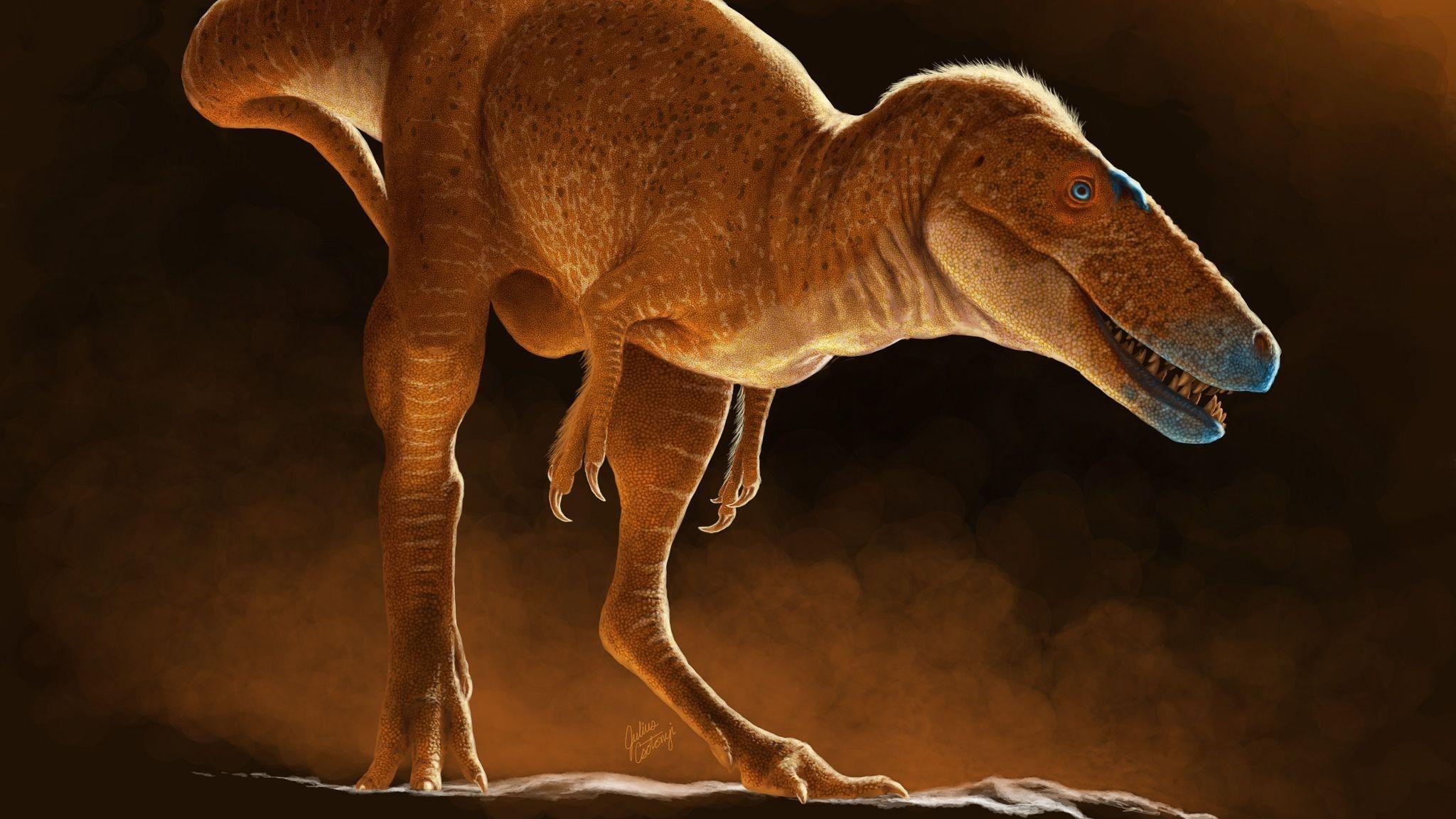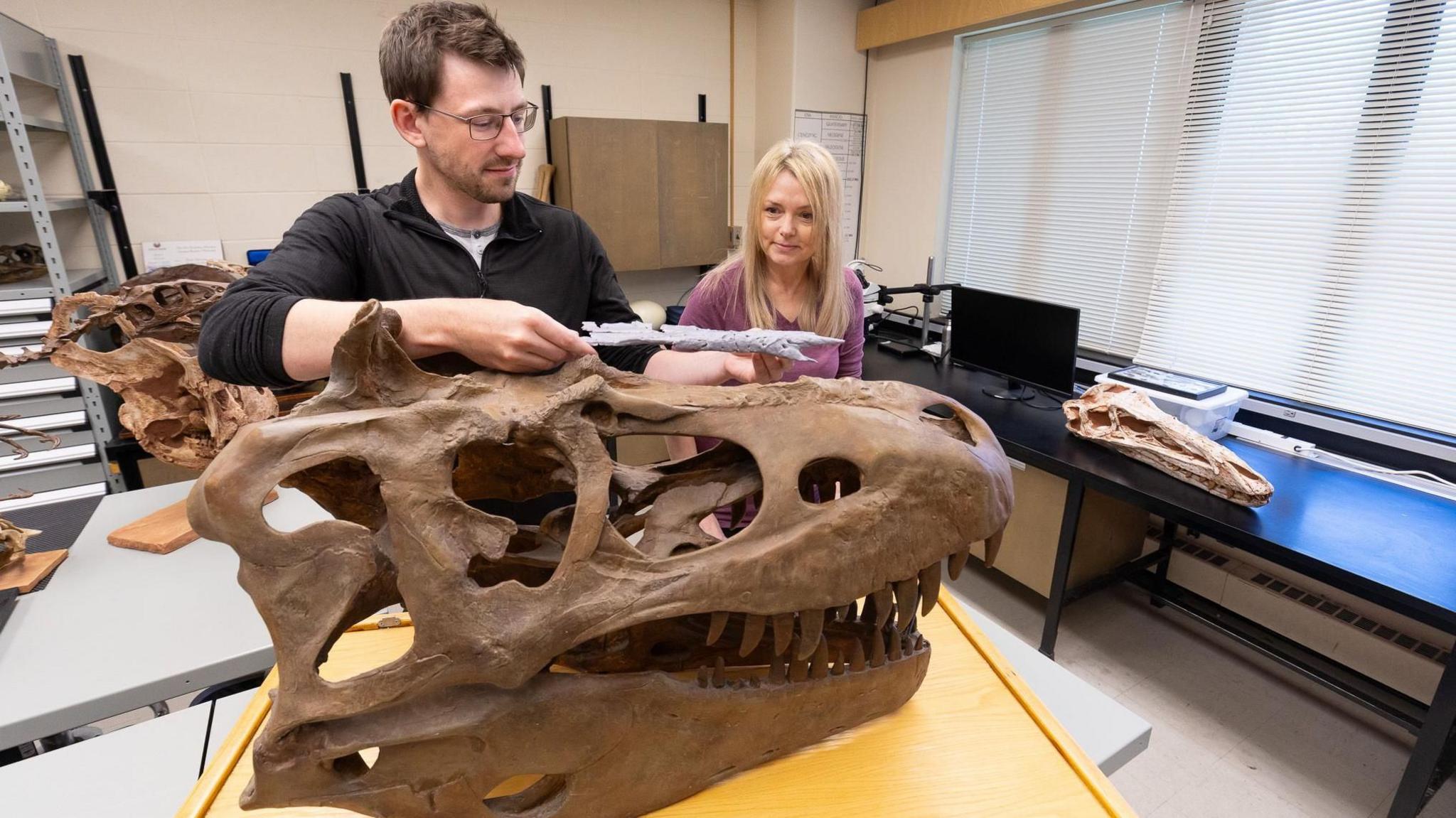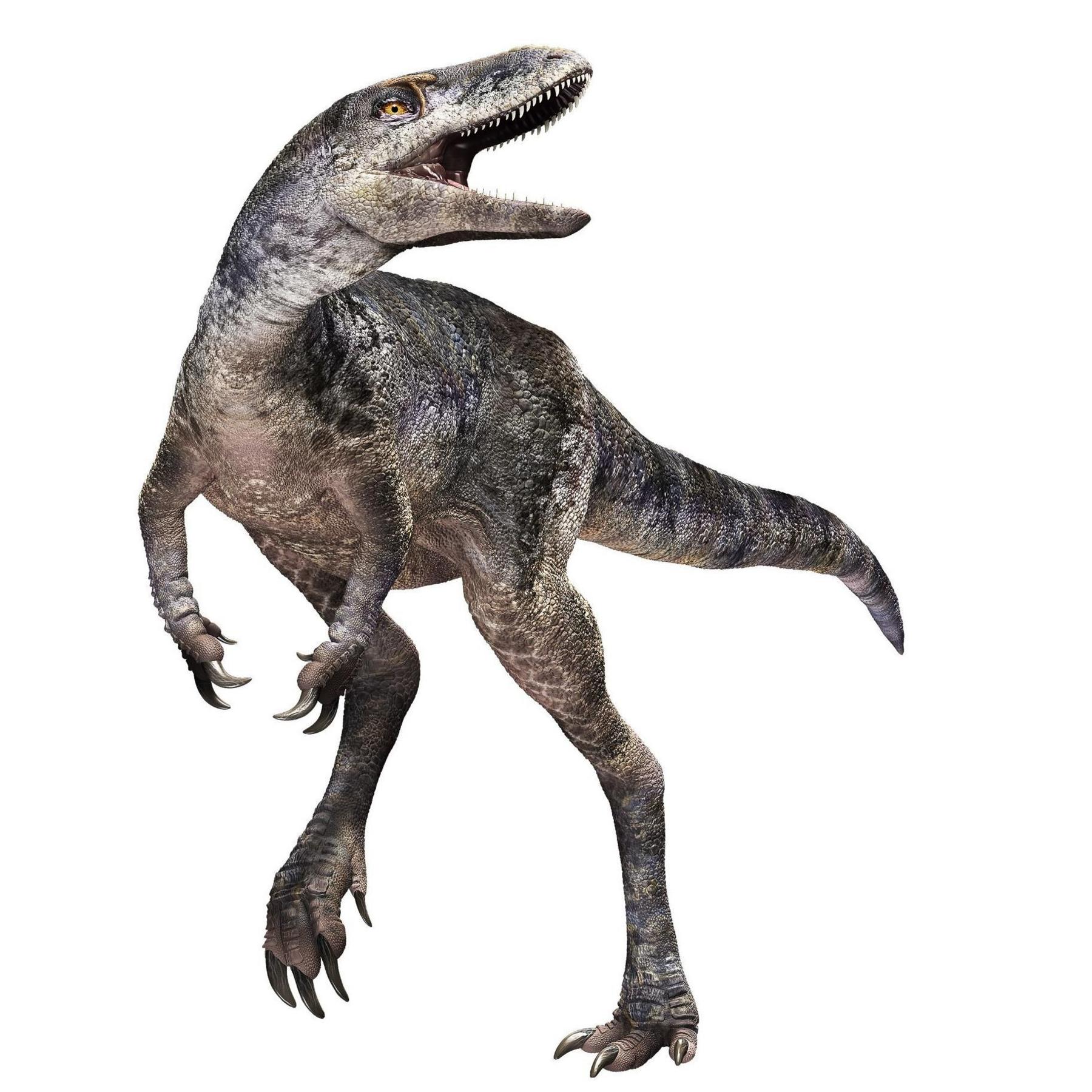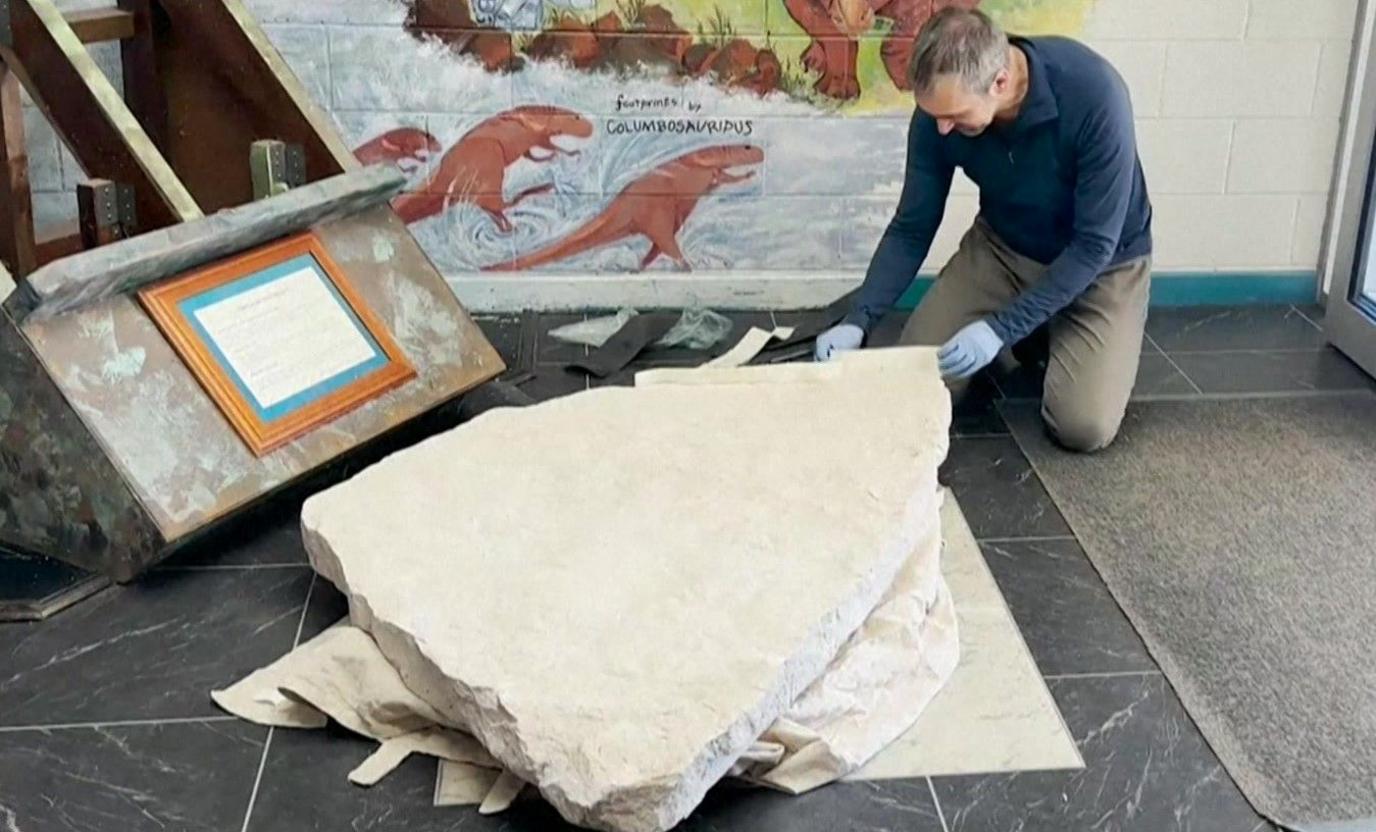What is the 'Prince of Dragons' dinosaur?

An artist's impression of the newly discovered dinosaur
- Published
When you think about the T.rex, you probably picture a big predator with small arms and big teeth.
But its early ancestors didn't look quite as fearsome and scientists have found a new species of dinosaur they believe is its most recent relative.
Researchers called the species Khankhuuluu mongoliensis which means Dragon Prince of Mongolia.
They say the discovery has helped understand the evolution of the T.rex from their small early ancestors.
More like this
New giant dinosaur species discovered in Egypt
- Published20 January
'Surprising' answer for birthplace of dinosaurs
- Published29 January
Fossil shows potential new dinosaur species
- Published22 May 2023
What did the 'Prince of Dragons' Khankhuuluu dinosaur look like?

PhD student Jared Voris and Prof Darla Zelenitsky worked on the study
The team at the University of Calgary in Canada studied two partial skeletons which were first discovered in Mongolia in the 1970s which were being kept at a museum,
The fossils are 86-million-years old and have given scientists new information about tyrannosaurs evolved.
Jared Voris, a PhD student working on the project, noticed features similar to the tyrannosaur.
The skull suggested it had a strong jaw, a feature found in tyrannosaurs, needed for their powerful bite.
The evolution of such powerful jaws meant the T.rex could pounce on larger prey, and even bite through bone.
Why 'Prince of Dragons' Khankhuuluu dinosaur discovery is so important to scientists

An artist's impression of Khankhuuluu mongoliensis
Tyrannosauroids are the superfamily of carnivorous (meat eating) dinosaurs that walked on two legs.
The first tyrannosauroids though were tiny. They were nimble on their feet and "lived in the shadows of other apex predators" according to lead researcher Professor Darla Zelenitsky.
She explained that the new species, Khankhuuluu, is a "transitional fossil between earlier ancestors and the mighty tyrannosaurs".
It would have weighed about 750kg (about the same as a giraffe) while an adult T.rex could have weighed as much as eight times that.
"It has helped us revise the tyrannosaur family tree and rewrite what we know about the evolution of tyrannosaurs," she added.
More stories like this
- Published10 July 2024

- Published14 March

- Published11 September 2024

